Alexandria on the Caucasus
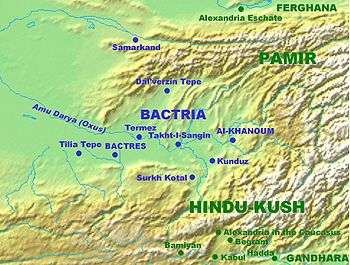
Alexandria in the Caucasus (medieval Kapisa, modern Bagram) was a colony of Alexander the Great (one of many colonies designated with the name Alexandria). He founded the colony at an important junction of communications in the southern foothills of the Hindu Kush mountains, in the country of the Paropamisade.
- Note: In Classical times, the Hindu Kush were also designated as the "Caucasus" in parallel to their Western equivalent, the Caucasus Mountains between Europe and Asia.
Alexander the Great
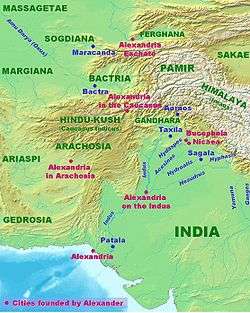
Alexander populated the city with 7,000 Macedonians, 3,000 mercenaries and thousands of natives (according to Curtius VII.3.23), or some 7,000 natives and 3,000 non-military camp followers and a quantity of Greek mercenaries (Diodorus, XVII.83.2), in March 329 BC. He had also built forts in what is nowadays Bagram in Afghanistan, at the foot of the Hindu Kush, replacing forts erected in much the same place by Persia's king Cyrus the Great c. 500 BC.
The divinity of the city seems to have been Zeus, as suggested by coins of the Greco-Bactrian king Eucratides.
Indo-Greek capital
Alexandria of the Caucasus was one of the capitals of the Indo-Greek kings (180 BC-AD 10). During the reign of Menander I the city was recorded as having a thriving Buddhist community, headed by Greek monks. In Buddhist literature, the Greek (Pali: Yona, lit: "Ionian") Buddhist monk Mahadhammarakkhita (Sanskrit: Mahadharmaraksita) is said to have come from “Alasandra” (thought to be Alexandria of the Caucasus), with 30,000 monks for the foundation ceremony of the Maha Thupa ("Great stupa") at Anuradhapura in Sri Lanka:
- "From Alasanda the city of the Yonas came the thera (elder) Yona Mahadhammarakkhita with thirty thousand bhikkhus." (Mahavamsa, XXIX)
Archaeology
Some archaeological evidence concerning Alexandria of the Caucasus was gathered by Charles Masson (1800–1853), providing insight into the history of that lost city. His findings include coins, rings, seals and other small objects. In the 1930s Roman Ghirshman, while conducting excavations near Bagram, found Egyptian and Syrian glassware, bronze statuettes, bowls, the Begram ivories and other objects including statues. This is an indication that Alexander's conquests have opened India to imports from the west.
Today the cities' remains feature a rectangular tell 500 by 200 metres in area and a nearby circular citadel about 3km northeast of Bagram Airforce base.
Gallery
-

Menander coin
-
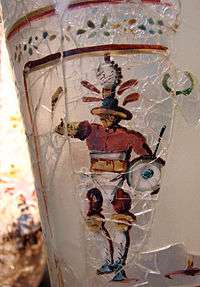
Begram Guimet
-

Begram Guimet
-

Begram Pitcher
-

Begram Plaque
-

Begram Scales
-
Begram Ivories
-
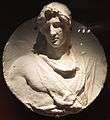
Begram Medallion
-
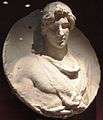
Begram Medallion
-
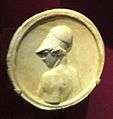
Begram Medallion
-
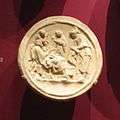
Begram Medallion
-

Begram Medallion
-
Begram Gladiator
-

Begram Goblet
-

Begram Harpocrates
-
References
India-Ancient History,Jha & Shrimali.
External links
Coordinates: 34°59′33″N 69°18′38″E / 34.99250°N 69.31056°E